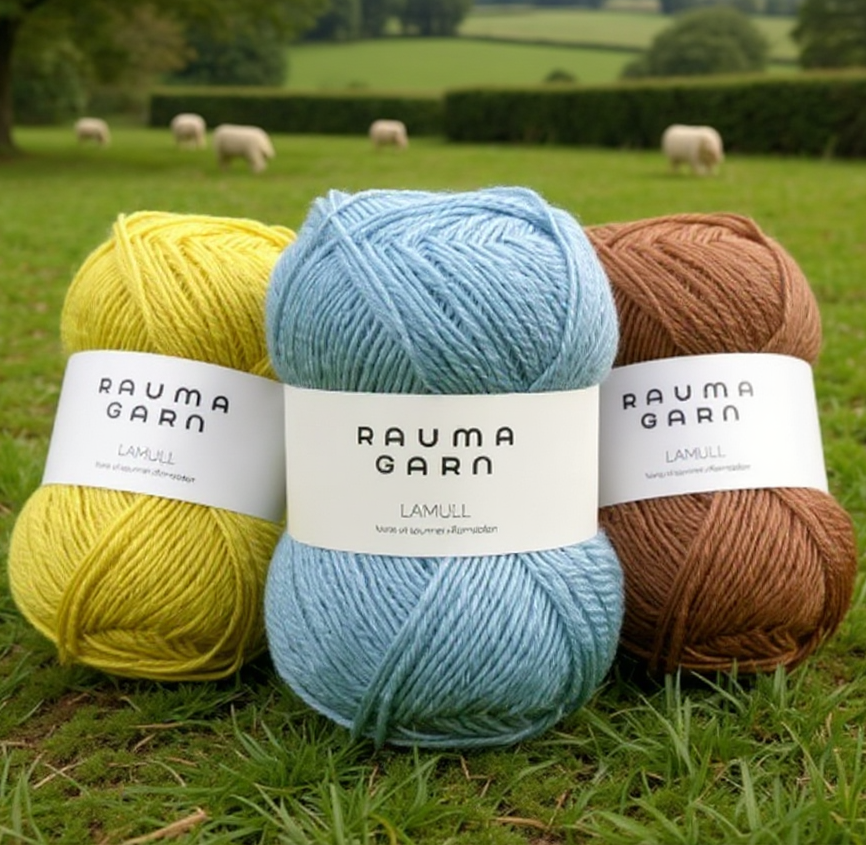What Makes Rauma Lamull Yarn Great?
Rauma’s thinnest Norwegian wool. Light, airy fingering for baby knits, fine colourwork, and breathable next-to-skin layers.
Orders over £50 come in a free cotton tote bag

Rauma’s thinnest Norwegian wool. Light, airy fingering for baby knits, fine colourwork, and breathable next-to-skin layers.
Rauma Ullvarefabrikk has spun Norwegian wool since 1927 in Veblungsnes, Romsdalen—a heritage, family-run mill that still produces locally.
Production is proudly “all-Norwegian”: fibre and every step from scouring to skeining happen at the mill, supporting regional farms and skills. Norwegian wool is widely recognised as among the most environmentally friendly textile fibres, thanks to hardy local breeds and low-input husbandry.
Fleece is sorted and scoured, then carded and spun with a light twist into a fine 2-ply to preserve loft and breathability at a fingering gauge. Yarn is dyed and skeined at Rauma’s Veblungsnes mill—an “all on site” flow that keeps quality tight and transport mileage low.
Hand-wash cool with wool soap, squeeze in a towel, dry flat. Expect a gentle bloom and softening after the first bath. As a non-superwash wool, Lamull will felt with heat/agitation. Handle finished garments gently if you want to keep the fabric airy.
Expect a thoughtful palette of heathers, naturals and clear brights that sing in stranded motifs and lace. As with all heathered wools, allow for dye-lot variation and buy enough for your project at the start.
Yes—Lamull is lambswool and knits into very light, breathable fabrics; it softens further after washing. If skin is extremely sensitive, layer over cotton or wool-silk.
It will felt with heat/agitation. The fibre “tooth” also makes it excellent for colourwork and confident steeking at fine gauges.
It’s a natural, renewable fibre produced in a low-input system; garments last a long time, and wool fibres biodegrade—unlike synthetics that shed persistent microplastics.